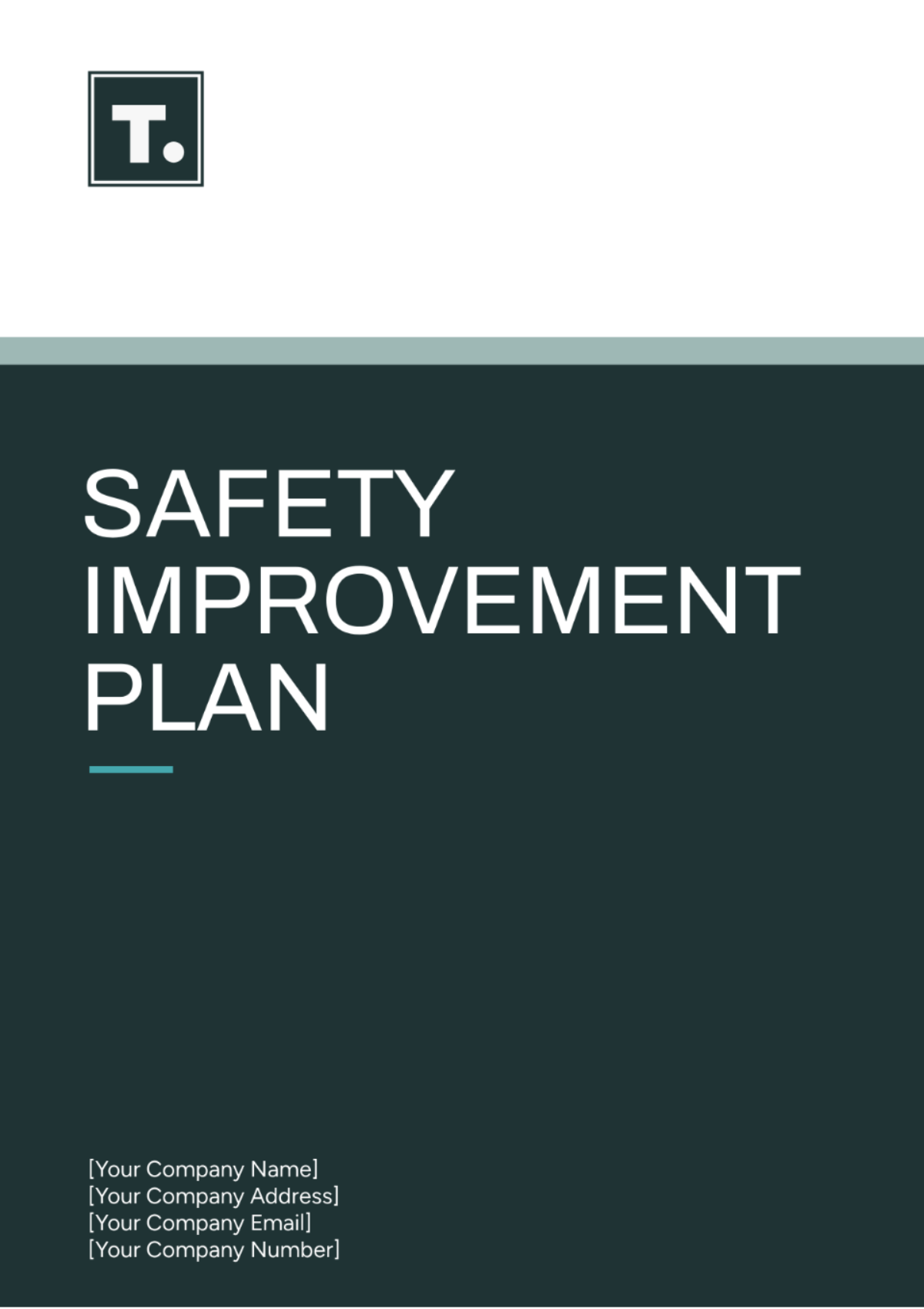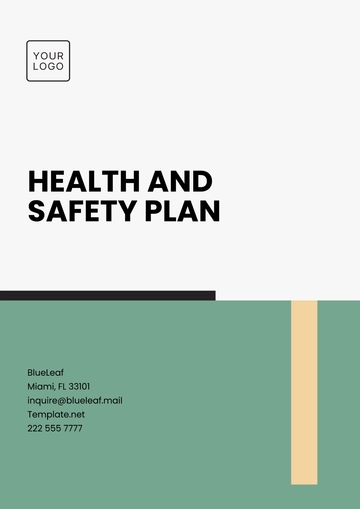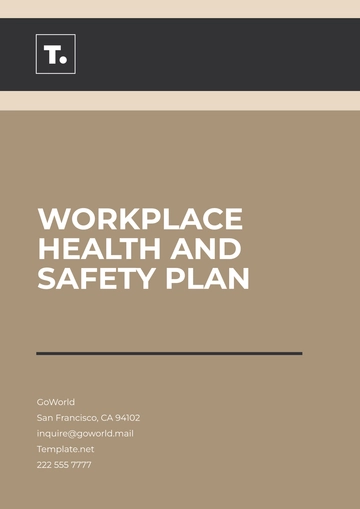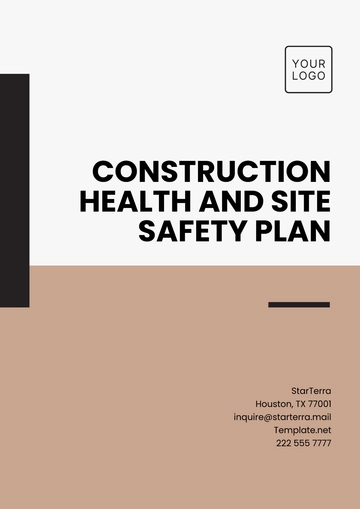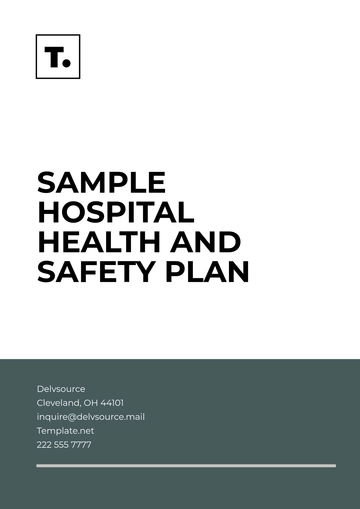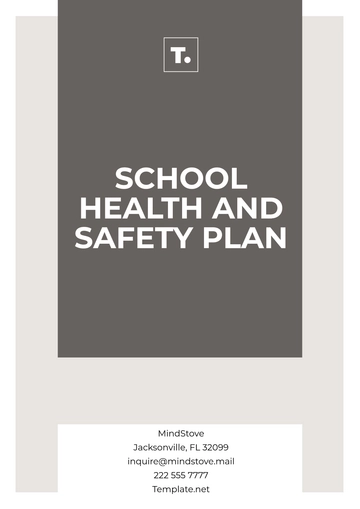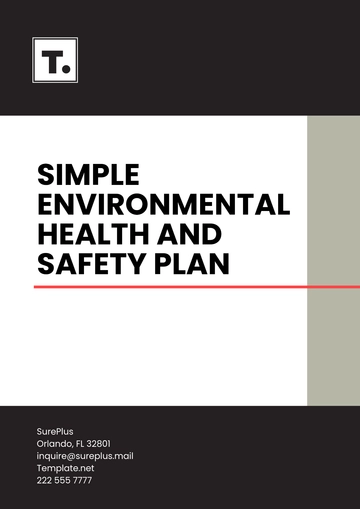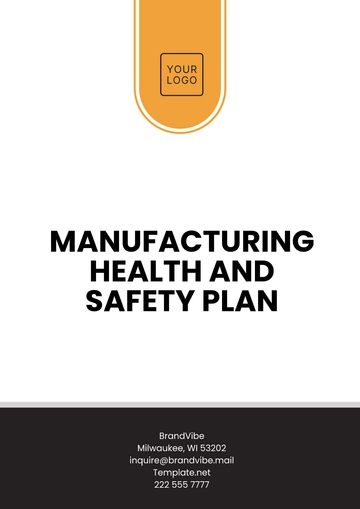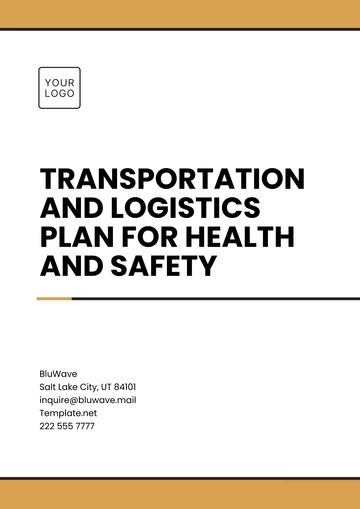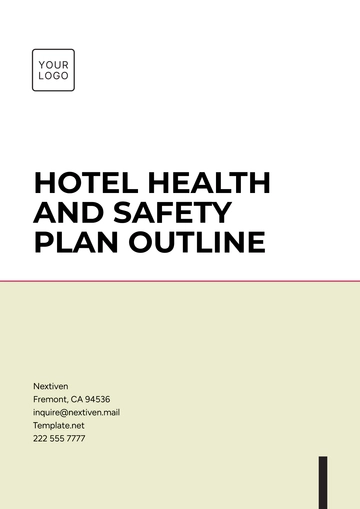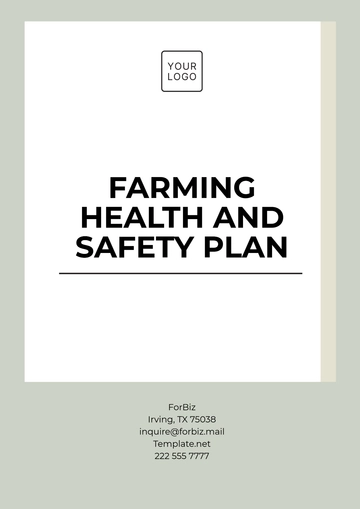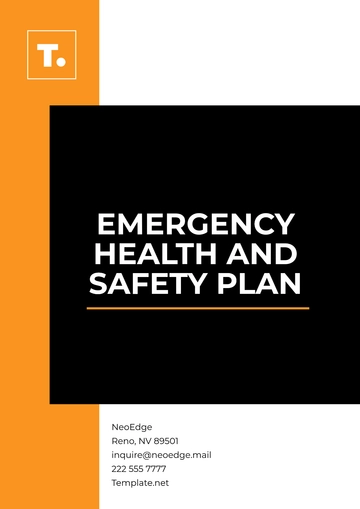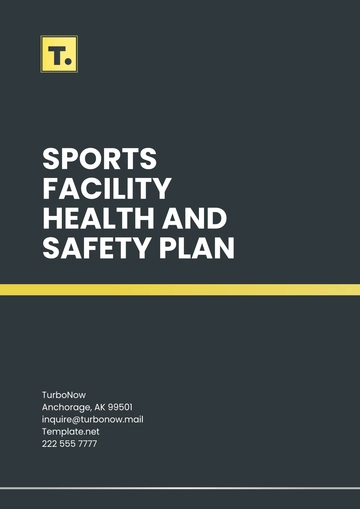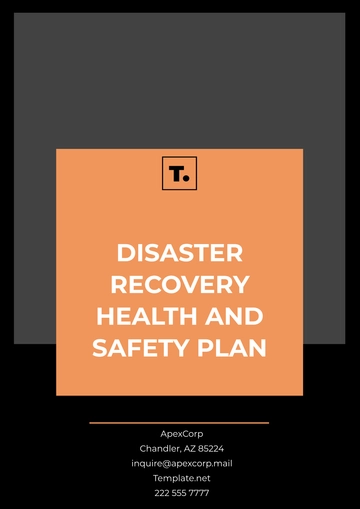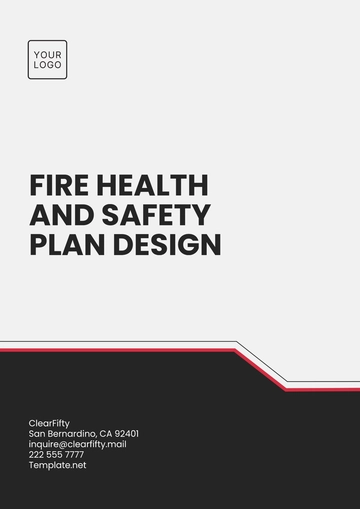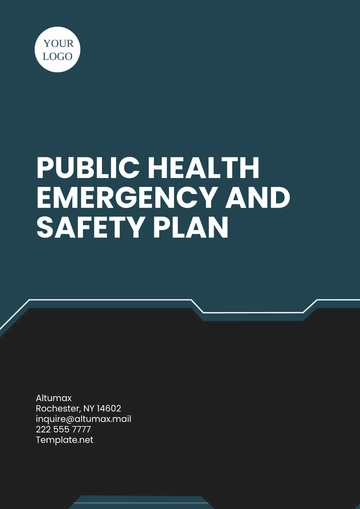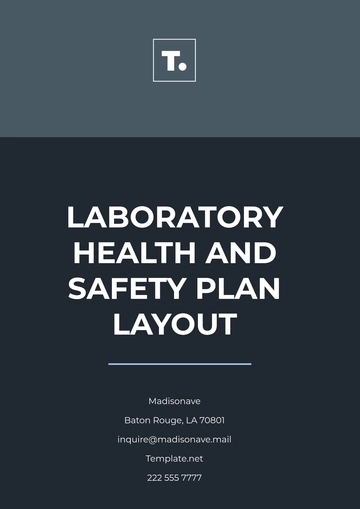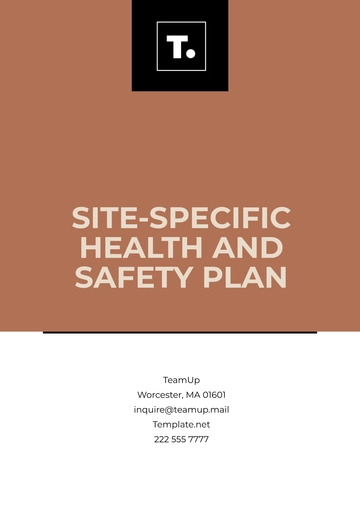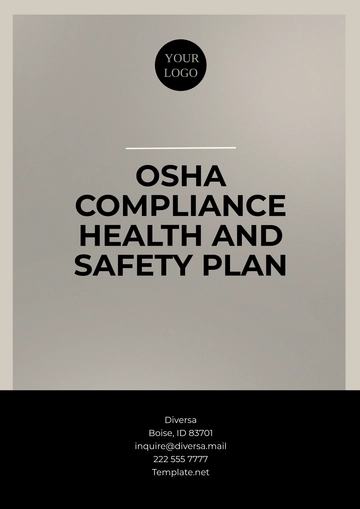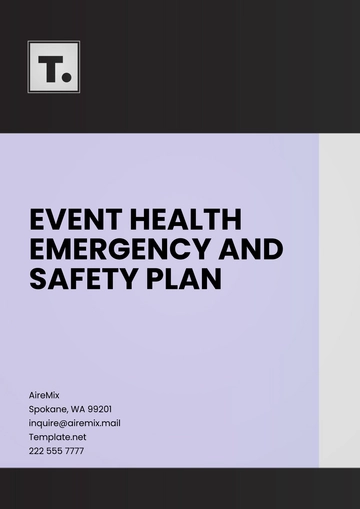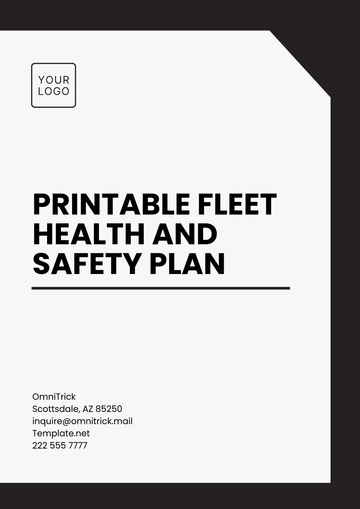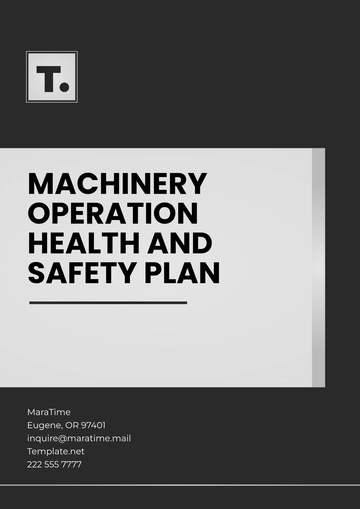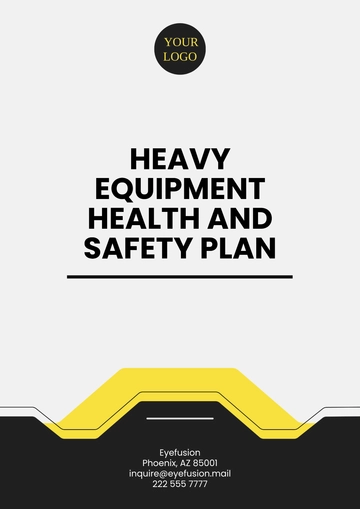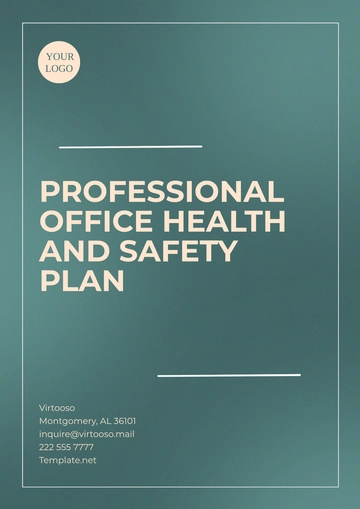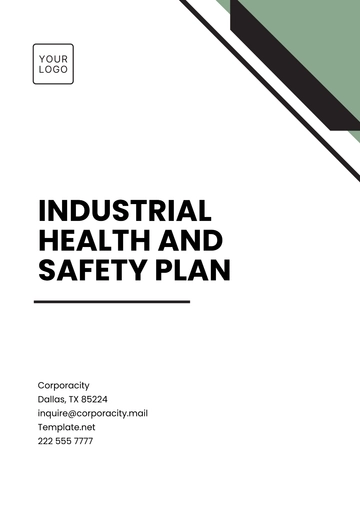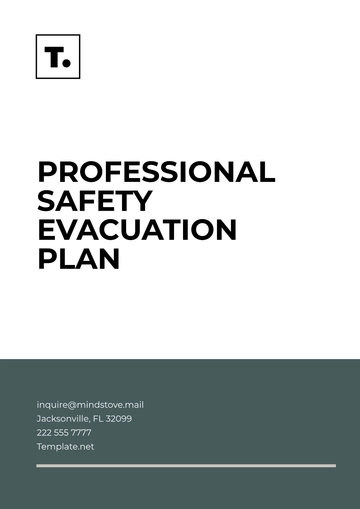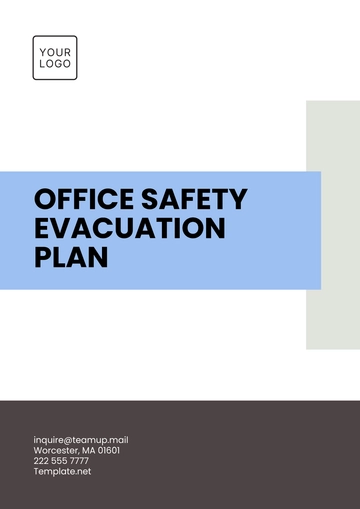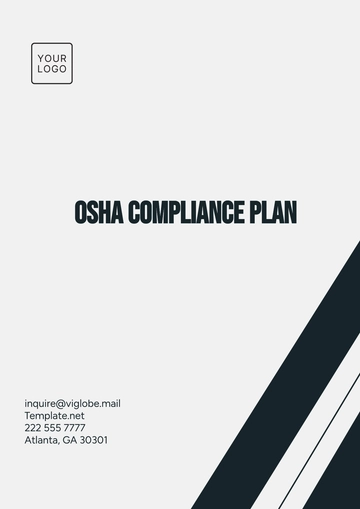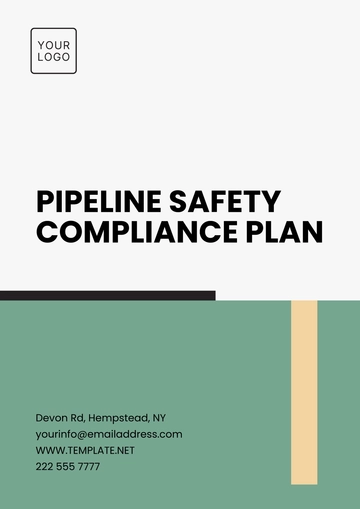Safety Improvement Plan
I. Introduction
The Safety Improvement Plan (SIP) outlines strategies for enhancing safety practices within [Your Company Name]. This plan aims to identify areas for improvement, implement effective solutions, and promote a culture of safety throughout the organization.
II. Safety Assessment
1. Current Safety Practices Evaluation
Conduct a comprehensive evaluation of existing safety protocols, procedures, and practices.
Identify strengths, weaknesses, and areas for improvement through safety audits, incident reports, and employee feedback.
2. Risk Assessment
Perform a risk assessment to identify potential hazards and risks within the workplace.
Prioritize risks based on severity, likelihood, and potential impact on employee safety.
III. Safety Improvement Goals
1. Goal Setting
Establish clear and measurable safety improvement goals aligned with organizational objectives.
Set specific targets for reducing accidents, near-misses, and hazards identified during the assessment.
2. Key Performance Indicators (KPIs)
Define KPIs to track progress toward safety improvement goals.
Examples of KPIs include injury rates, incident response times, and completion of safety training.
IV. Improvement Strategies
1. Training and Education
2. Engineering Controls
Implement engineering controls to eliminate or minimize hazards in the workplace.
Examples include installing safety guards on machinery, improving ventilation systems, and implementing ergonomic workstation designs.
3. Administrative Controls
Enhance administrative controls to improve safety practices and promote compliance.
Examples include implementing safety checklists, conducting regular safety meetings, and establishing clear reporting procedures for hazards and incidents.
4. Personal Protective Equipment (PPE)
5. Emergency Preparedness
V. Implementation Plan
1. Action Plan
Develop a detailed action plan outlining specific steps, responsible parties, and timelines for implementing each improvement strategy.
Allocate resources, such as budget, personnel, and equipment, as needed.
2. Communication Plan
VI. Monitoring and Evaluation
1. Progress Monitoring
2. Performance Evaluation
Evaluate the effectiveness of implemented improvement strategies in reducing risks and enhancing safety practices.
Solicit feedback from employees to identify any challenges or barriers to implementation.
VII. Continuous Improvement
1. Lessons Learned
2. Plan Review and Revision
Regularly review and update the Safety Improvement Plan to incorporate new findings, regulations, or best practices.
Adapt strategies as necessary to address evolving safety needs and organizational changes.
VIII. Commitment to Safety Culture
[Your Company Name] is committed to fostering a culture of safety where the well-being of employees is paramount. By implementing this Safety Improvement Plan, we aim to continuously enhance safety practices and promote a safe and healthy work environment for all.
Plan Templates @ Template.net
